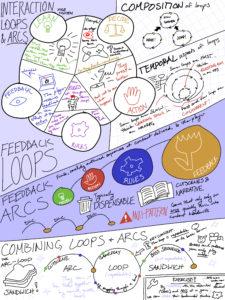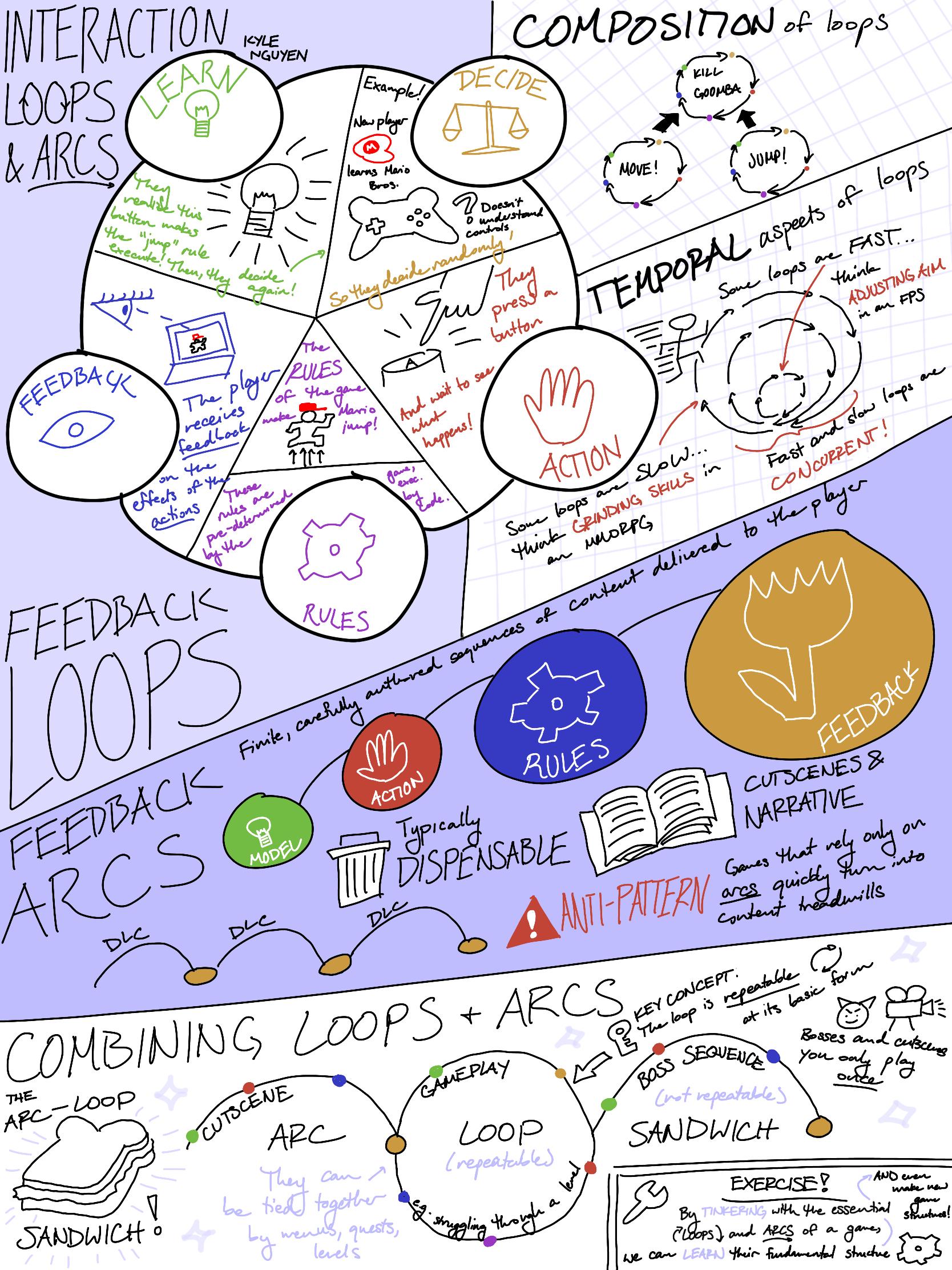
Again, I’m examining Stardew Valley.
The game consists of four or five “compositions of loops” centered around the broad activities a player can choose to do. Roughly these are
- farming crops
- farming livestock
- mining
- fishing
- foraging.
Each of these is a composition of loops since they each consist of micro-loops that govern moment-to-moment action AND macro-loops that determine day-to-day interactions. For example, in the case of farming crops, one micro-interaction loop is watering crops:
- Notice crop is dry and that inventory contains a watering can
- Walk over to the crop and try watering it
- The game plays watering animation and changes the crop graphic to show it’s been watered
- Learn that crops can be watered, and repeat with the rest of the crops
At the macro level, crop farming also requires the player to learn that crops can grow and that they reach maturity and can be harvested.
- Notice crops growing day by day
- At a certain point, harvest the crop and sell it for gold
- Bring the gold to the store, which sells crop seeds
- Buy crop seeds, realize that more gold can be made by repeating various micro-loops
Stardew Valley keeps these rather simple loops fresh by offering some arcs that introduce new crops, new NPCs/backstories, and new secrets to discover. For example, the player can collect crops in the Town Hall to progress towards completing various “baskets”. These are more arcs than loops because they are non-repeatable, linearly progressing tasks that have a defined ending point (when the bundle is complete). NPC relationships are another gameplay arc, in which players cultivate friendships with villagers, unlocking one-time cutscene interactions with them at certain relationship milestones. Even the seasons are a gameplay arc since each season brings new crops/music scores to explore. Even though the seasons ostensibly loop each year, they are the same each time, so the very first year of discovering the new content each season is a gameplay arc of new content.



